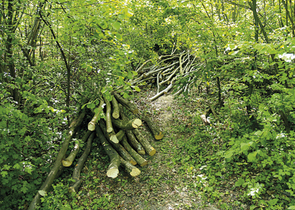Nature Conservation 4/2010 — 14. 9. 2010 — International Nature Conservation — Print article in pdf
Tree Sucker Forests in the Southern Carpathian Landscape

The southern part of the Romanian Banat (western part of the country) has been inhabited by Czechs since 1823. The regions historical development strongly influenced the present state of forests there.
The distance from a human settlement is a main factor affecting the forest through management intensity: at more distant sites, more natural tree composition has been preserved. At present, decreasing human population density has been causing overgrowing the former pastures and rangelands. Processes in the karst landscape resulted in a harmonic landscape scenery/character: the landscape mosaic consists of various patches (limestone holes or dolines, fields, meadows, hedgerows, clusters of trees, forests grazed by livestock to natural forests). The ratio between various habitat types merges into semi-natural or natural communities. Sucker forests, coppice forests respectively are not managed in the way known in the Czech Republic: the biggest trees are selectively logged. The tree composition of forests in the Banat should also be mentioned. From a point of view of sucker forest management, the most important tree species include the European or Common Beech (Fagus sylvatica), Oriental Hornbeam (Carpinus orientalis), European or Common Hornbeam (Carpinus betulus), Oak (Quercus spp.) and Hedge Maple (Acer campestre). The Common Hazel (Corylus avellana) and Willow (Salix spp.) are less common there.

